Wednesday, August 22. 2018
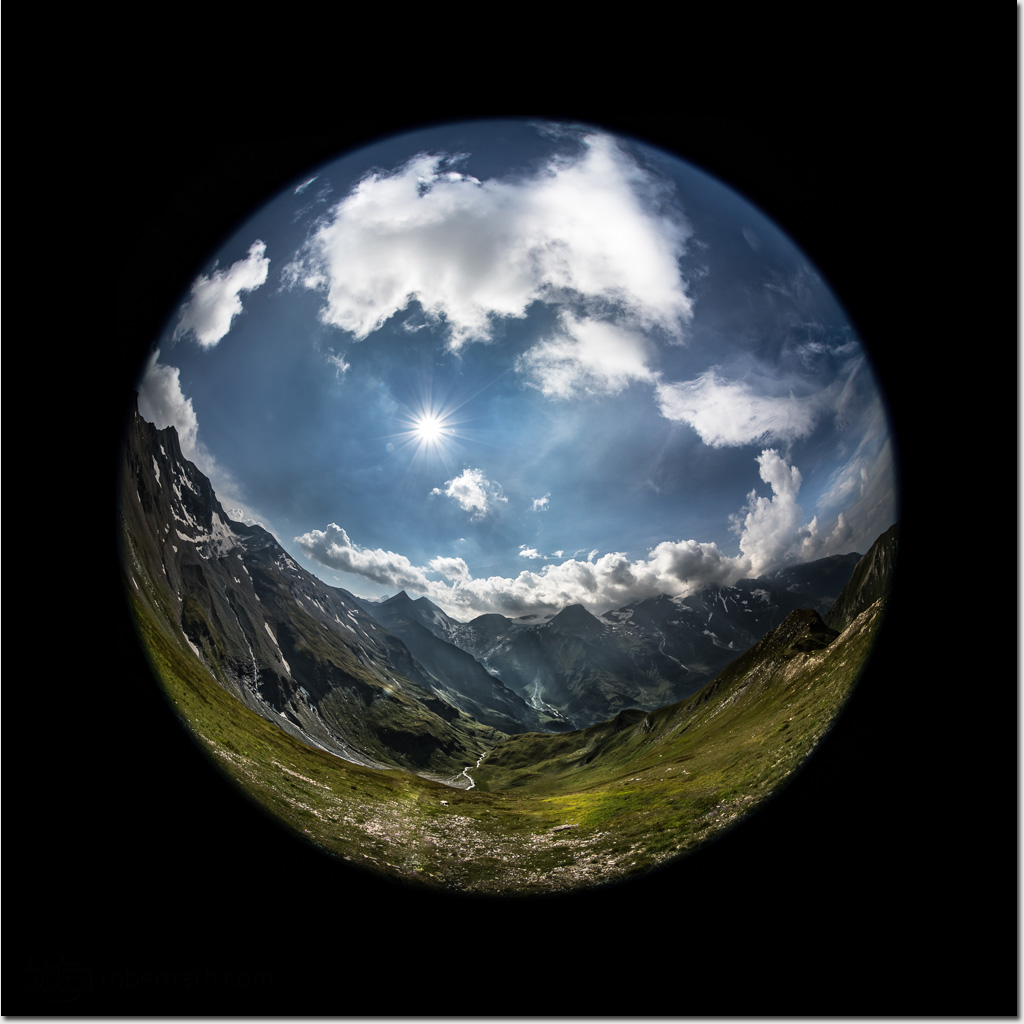
It's so hard to describe the beauty of this landscape, the scale of it, the life in it, the colour through it, the majesty of it.
From deep in the lush valleys the grey peaks seem a world away, almost disconnected from the peaceful cosy green of heather and forest.
From high on the peaks, in the unforgiving cold and in the biting wind, those same green valleys far below seem like markings on a map.
Here at the border of grey and green, halfway between both worlds it feels all in balance.
Photo: Robert Rath, 'All in Balance', 1/400s f/13 ISO100 8mm
Tuesday, August 21. 2018

Even standing still you'll still walk this way...
Photo: Robert Rath, 'Walk This Way', 1/60s f/4 ISO1000 17mm
Monday, August 20. 2018
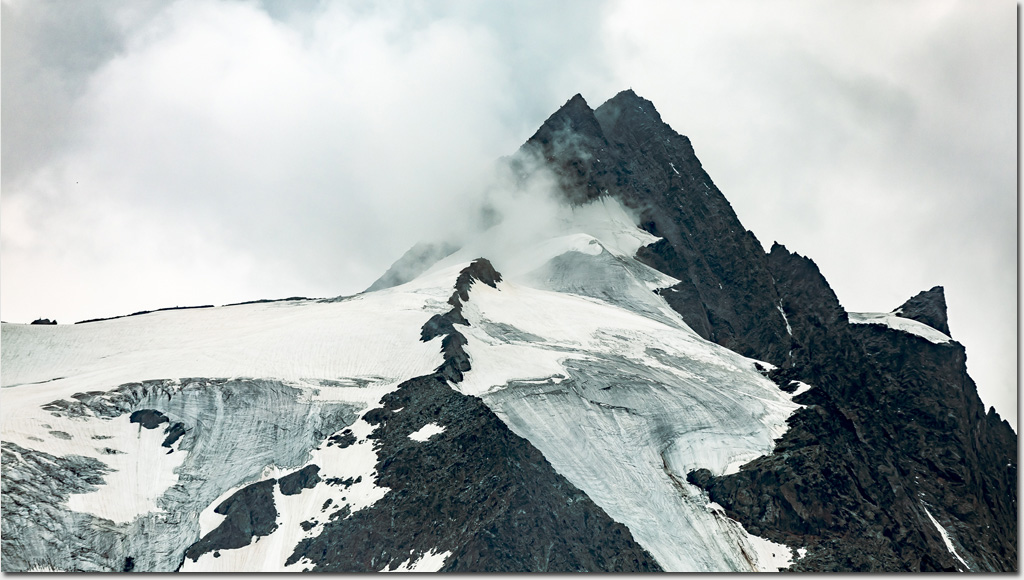
"The heart of Austria!", my cousin exclaimed as we stood on the far side of Pasterze Glacier on the Carinthian side of the border between Carinthia and Tyrol, deep in the Austrian Alps.
High in that uninviting world of ice and rock four climbers are slowly making their way up a 45 degree ridge-line to the summit of Großglockner. From here it looks like they are heading up the wrong peak but that's just a trick of the angles with their destination some way beyond.
To many adventurous Austrians, climbing Großglockner is like a pilgrimage that needs be undertaken at least once in one's lifetime.
From our relatively cozy vantage point it's easy to imagine such a climb. Perhaps even entertain adding it to one's own personal todo-once list. I think however sanity and personal self preservation will prevail.
Photo: Robert Rath, 'The Heart of Austria', 1/2000s f/4 ISO100 200mm
Sunday, August 19. 2018
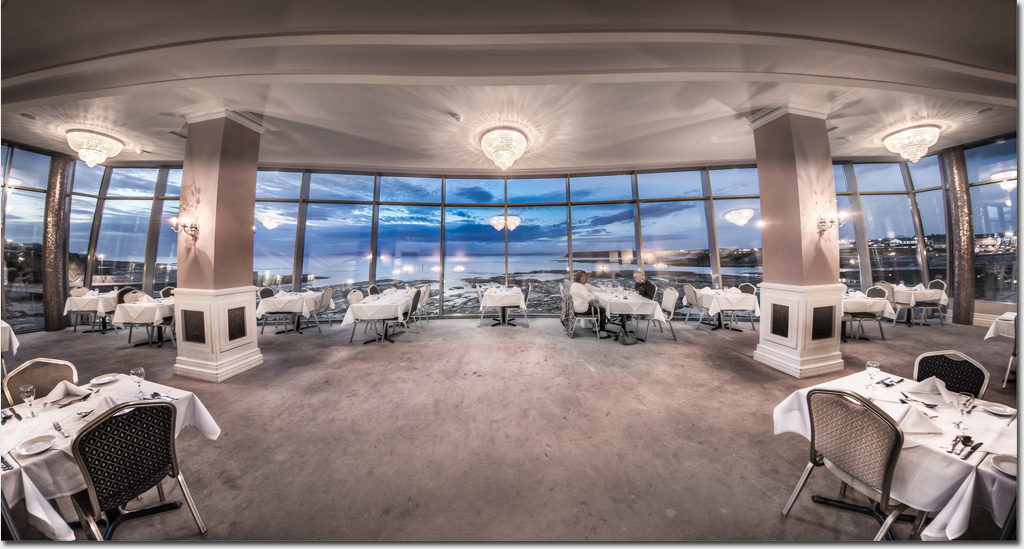
Peak Restaurant in Bundoran has one of the most awesome panoramic ocean views I have ever experienced.
Being seated there was something between being on the bridge of an ocean liner leaving port and some palatial dining hall.
Combining a window table with sunset timing and we got both dinner and a show of Ireland' Wild Atlantic Way.
Photo: Robert Rath, 'Dinner And A Show', 1s f/10 ISO640 12mm
Saturday, August 18. 2018

Airports often showcase high end cars to wealthy travelers but rarely the exotica of the motoring world.
That's where this car is different. On the one hand it posses like a European super car yet being an electric hybrid it seems at odds with itself.
I'm not sure what I think about this beautiful beast. For now I will just ogle like everyone else.
Photo: Robert Rath, 'Das Neue BMW', 1/125s f/8 ISO500 33mm
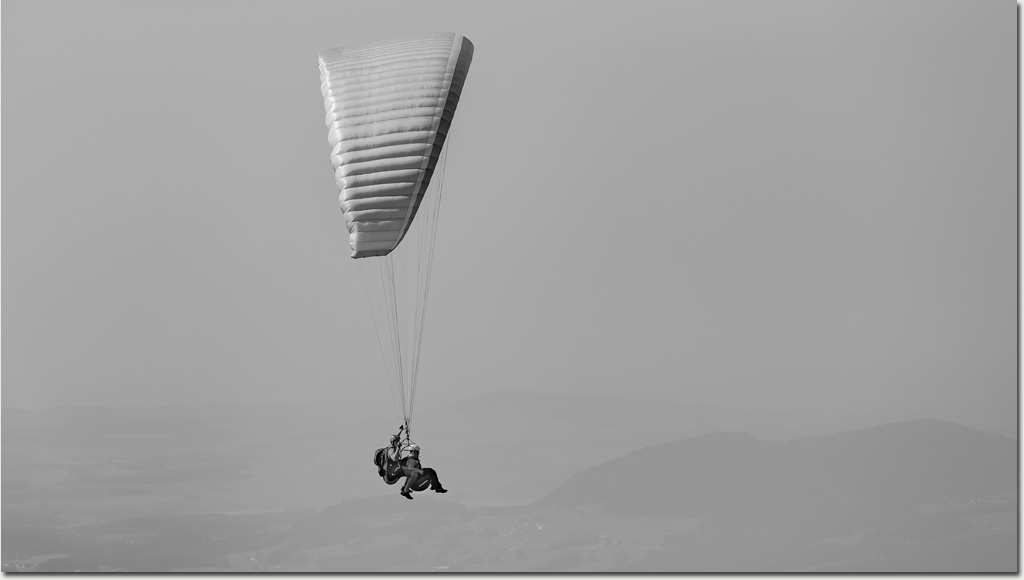
A veteran and pillion novice soar high above the village of Sankt Gilgen and Wolfgangsee.
I wonder how many times the veteran has launched himself from the slopes of the Zwölferhorn. Of little doubt is the experience of the novice. Probably this is his very first time.
I wonder if his pillion ride will be his last, a day to be remembered or the start of brand new obsession.
Photo: Robert Rath, 'Pillion', 1/1600s f/5.6 ISO100 200mm
Thursday, August 16. 2018
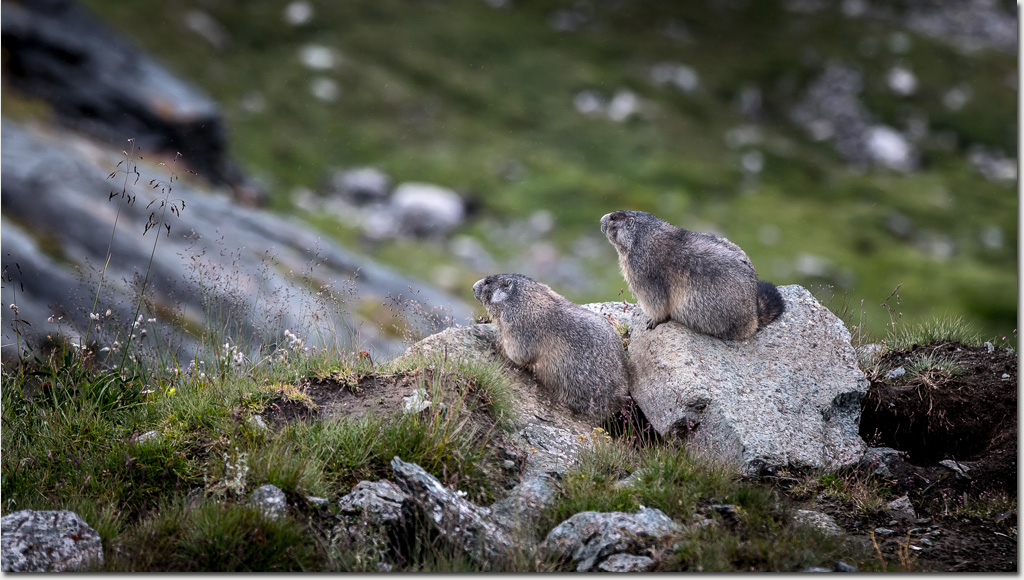
My cousin Roman had talked about 'the monkeys' up in the high alps. How they chatter, whistle and shriek between themselves up in the alpine valleys.
I thought he was joking! Monkeys in Austria?
Call it something lost in translation or perhaps a local joke but then we spotted a pair lingering close to their winter burrow.
Marmots, marmots, not monkeys! Such was my surprise to find such cute and cheeky critters high up above 2500 m in a place buried by meters of snow in the winter.
Apparently these guys spend the entire summer grazing on the alpine grasses making themselves round and fat and ready for a long winter's hibernation ahead.
Later in the afternoon while out walking on my own I crested a small ridge and startled a small family of marmots grazing in the pastures below.
After hearing the warning chatter and the whistles and shrieks echoing through the valley I finally understood why my cousin calls them monkeys.
Photo: Robert Rath, 'Seeing Double, Hearing Double', 1/500s f/4 ISO320 200mm
Wednesday, August 15. 2018
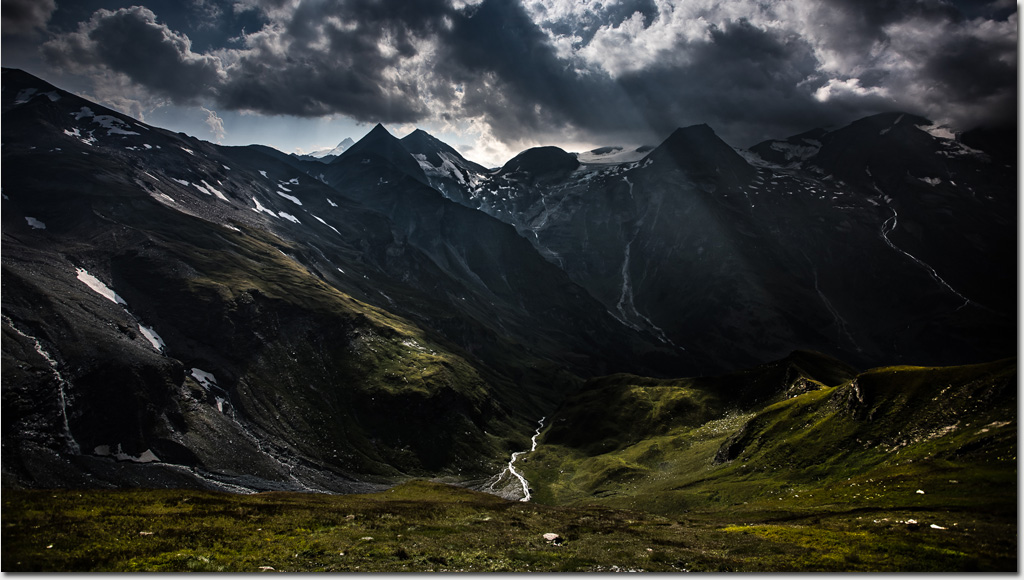
In the deep alps of Austria, lies her heart, the peak of Großglockner, Austria's highest mountain.
As mountains go it might be dwarfed on paper by 58 higher peaks scattered throughout the alps but in absolute prominence relative to the surrounding terrain it stands only second to France's Mount Blanc.
In the heatwave of a 30+ degreeC Austrian summer the mountains have taken on an otherworldly appearance where velvety alpine heather reaches up into dark grey scree punctuated with resilient ice from previous winters.
Grand by any measure.
Photo: Robert Rath, 'Grand By Any Measure', 1/1250 f/7.1 ISO100 17mm
Tuesday, August 14. 2018
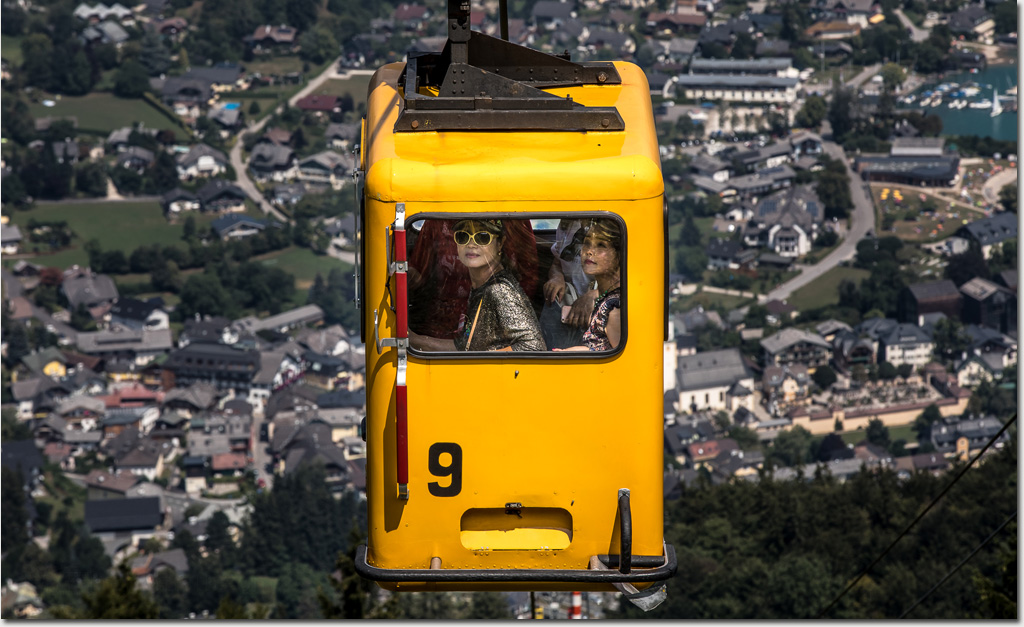
What would you call four young ladies flying hundreds of meters high above the village of Sankt Gilgen in the Austrian Salzkammergut?
Angels of course.
Photo: Robert Rath, ' A Box of Angels', 1/320 f/10 ISO100 200mm
Monday, August 13. 2018
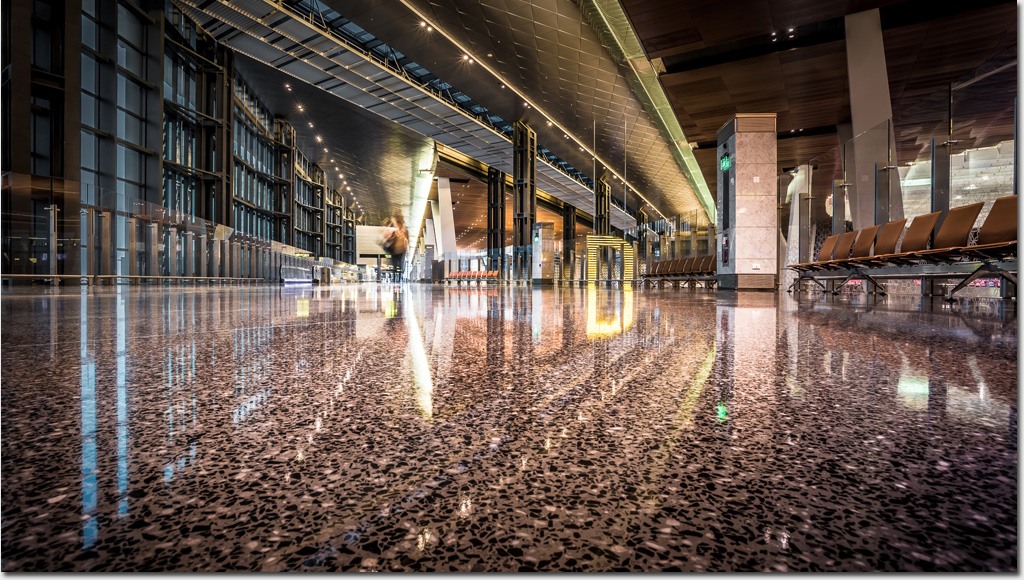
Here in the imposing space of Doha International Airport a single traveler makes her way alone amid the glass, the concrete, the marble, the plastic, and the metals.
This rare found moment of punctuated quiet is really not scarce at all in those spaces between the disembarking throngs of travelers, just hidden between the pulse of human movement.
In the echo of her foot falls in this material space the soul of Doha International Airport can almost be heard.
Photo: Robert Rath, 'Soul of Space', 8s f/18 ISO100 100mm
Friday, August 10. 2018
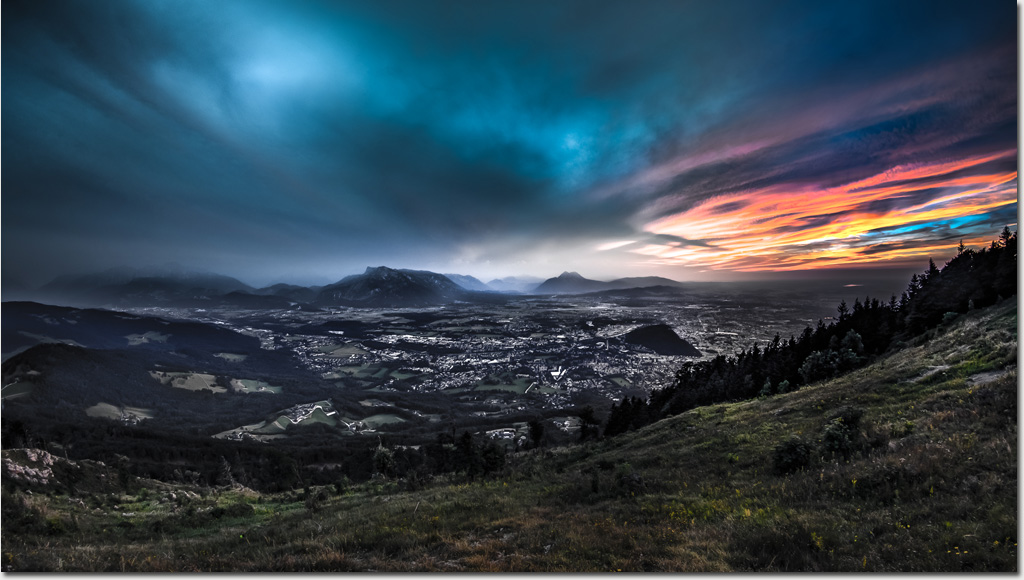
There is a defining moment when the natural twilight over the land begins to dim and the lights of civilization briefly reach a balance.
The timing of that moment can not be determined in advance. It depends on the way the daylight is drawn away in cloud and sky and haze and the waking of the city lights.
One moment the city below sleeps under a golden twilight and the next it dominates the landscape.
Don't blink lest you miss it!
Photo: Robert Rath, 'A Balance of Worlds', 1/4 f/6.3 ISO100 14mm
Thursday, August 9. 2018
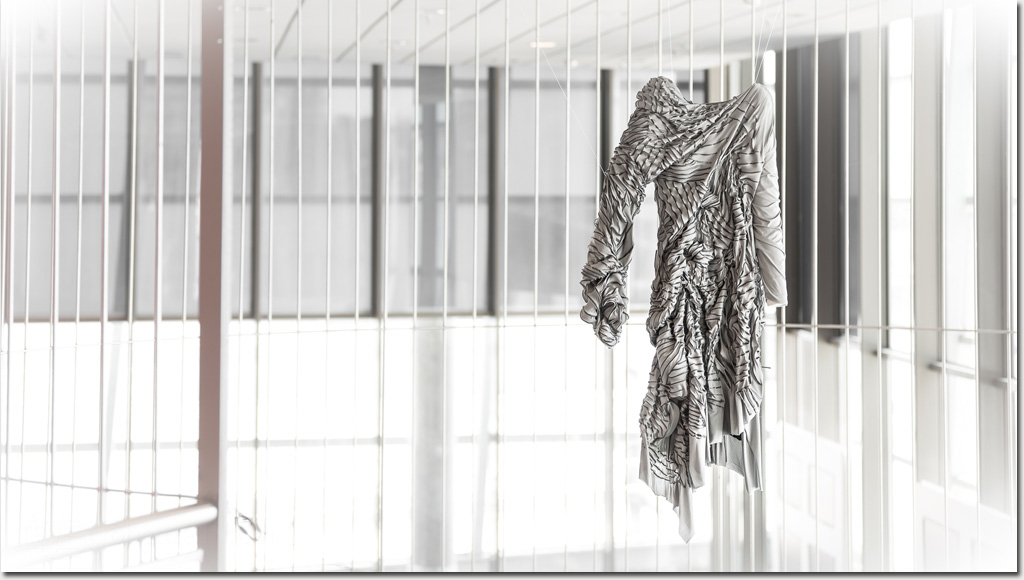
What happens when you arm a technical robot with a glue gun, program it with the right code and set it to work on a sheet of stretched fabric?
This stunning piece created by Anna Piecek and a Kuka robot at Kunstuniversität Linz is an interesting fusion of fashion and robotics that might just be as appealing to the coders as to the catwalk pundits of Paris.
'Artist Anna Piecek’s main objective in this project was to come up with new and innovative ways to work with textiles by making volumes and unconventional shapes with methods that had never before been used in the context of fabric design.'
Without those coders however, Anna's dress may never have materialised ( sorry about the pun ).
Photo: Robert Rath, ' Dress Code', 1/160 f/2.8 ISO250 70mm
Tuesday, August 7. 2018
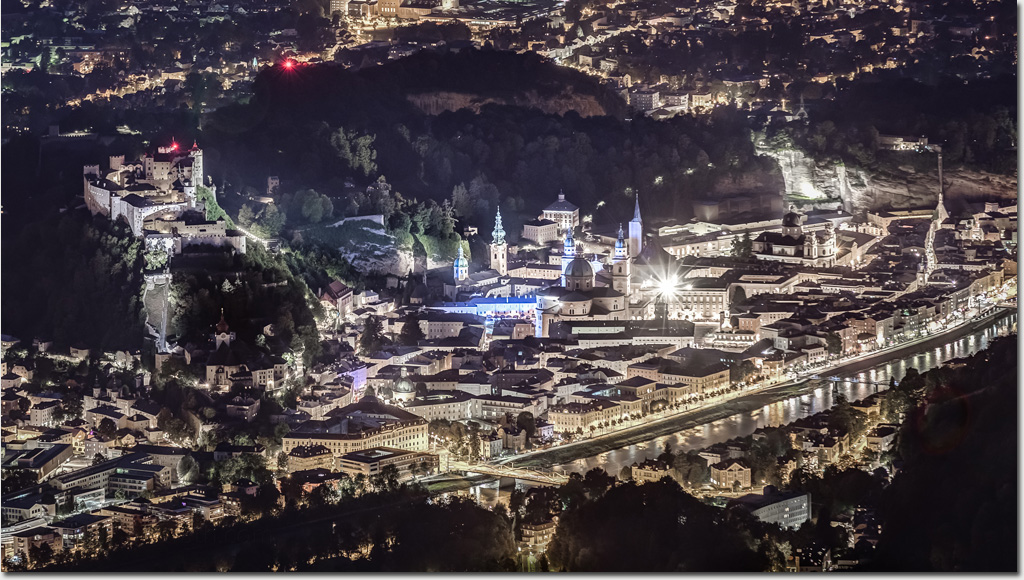
Looking down on Mozart's own town I can almost hear the music that made one of Austria's own renowned.
To the left is the Festung Hohensalzbur standing proud over the Salzburg Cathedral and the old city while the river Salzach cuts through right through Salzburg dividing old and new.
Ah the sounds, look at the sounds!
Photo: Robert Rath, ' The Sound Of Salzburg', 1.3 f/4 ISO800 200mm
Sunday, August 5. 2018
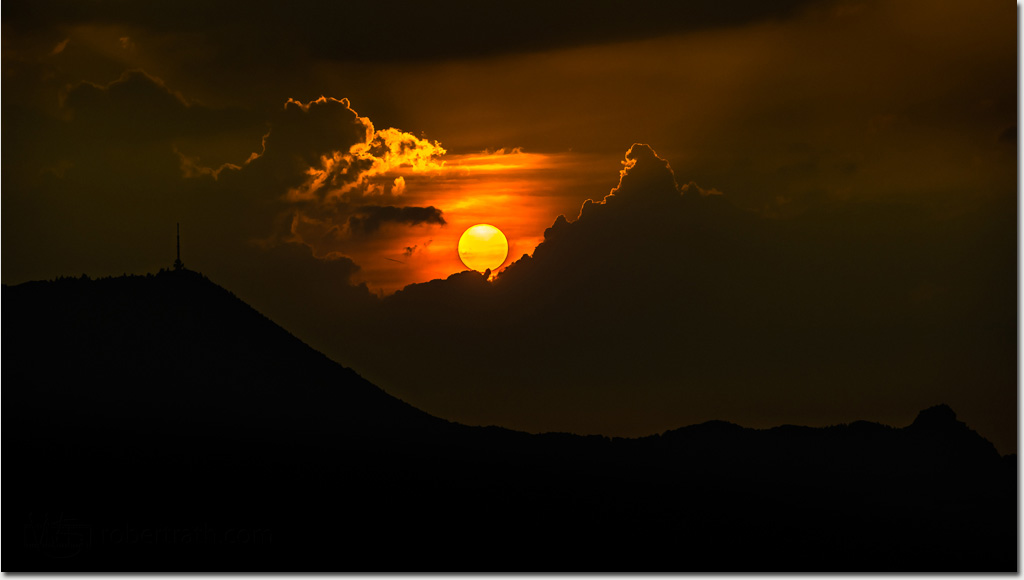
I'd been looking for a sunset in the western evening sky when a jagged crack of orange appeared.
We watched as that blaze of zigzagging orange grew and grew and then shrank away into the grey it first emerged from. Oh well, not tonight I thought and put the camera away.
Twenty minutes later after I had settled into other things I looked out of our window to find a fiery orange orb silhouetting the Gaisberg off in the distance.
I grabbed my camera, raced outside and ... nothing! No memory card! Oh yes I was downloading images using a card reader. I raced back inside, clicked on 'eject memory card' and ... error, card is in use! So I just yanked out the card and hoped for the best.
With camera and card re-united I was able capture this wonderful Salzkammergut sunset.
Photo: Robert Rath, ' Salzkammergut Sunset', 1/1000s f/6.3 ISO100 200mm
Friday, August 3. 2018
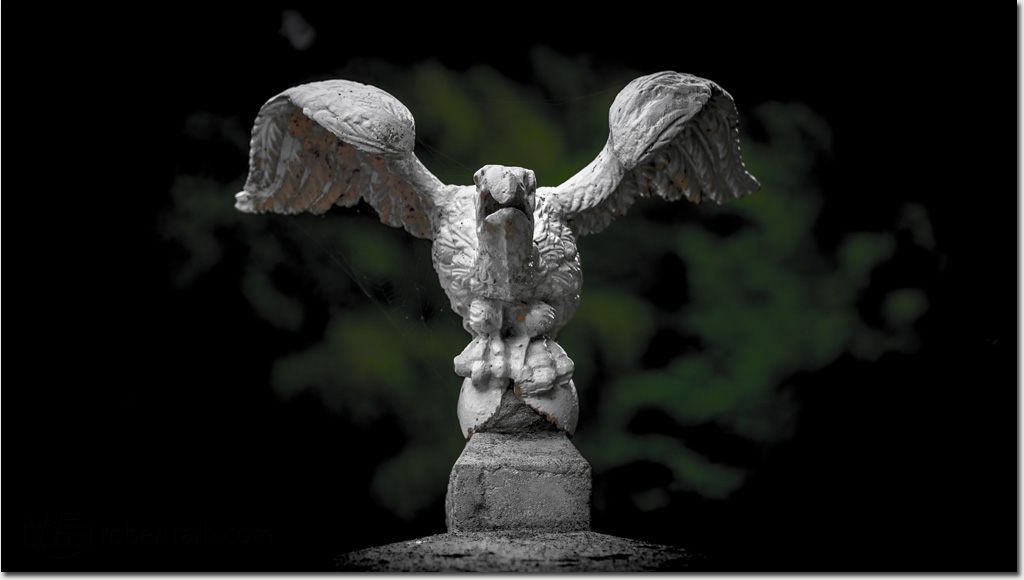
Standing sentry to all passers-by, four of these these eagle sentinels adorn the Swiss Cottage Bridge over The River Suir.
I wonder if their gargoyle like appearance was meant to instill some form of apotropaic magic to protect the cottage from ill.
Probably not but it's fun to imagine!
Photo: Robert Rath, 'Sentry', 1/500s f/2.8 ISO100 120mm
Thursday, August 2. 2018
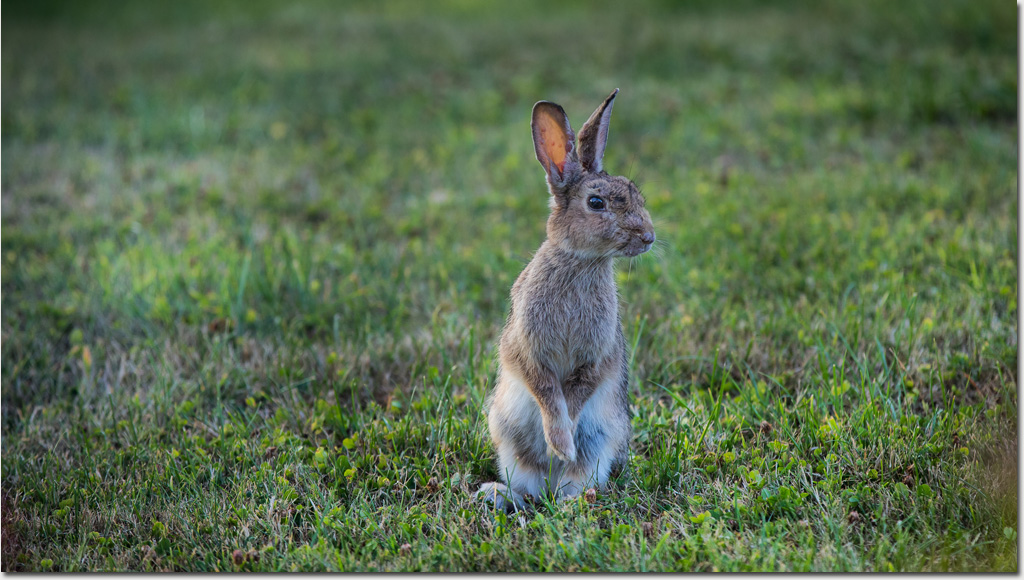
This flighty little character will never compete with the absolute self assurance of Bugs Bunny himself. Still it is easy to anthropomorphically imagine a 'what's up doc' in a thought bubble above this scene.
Whats up indeed I thought as I pointed my lens and pressed the shutter. A single click later and my less than self assured rabbit took off for the safety of the briar patch.
Photo: Robert Rath, 'What's Up Doc?', 1/400s f/3.5 ISO640 200mm
Wednesday, August 1. 2018
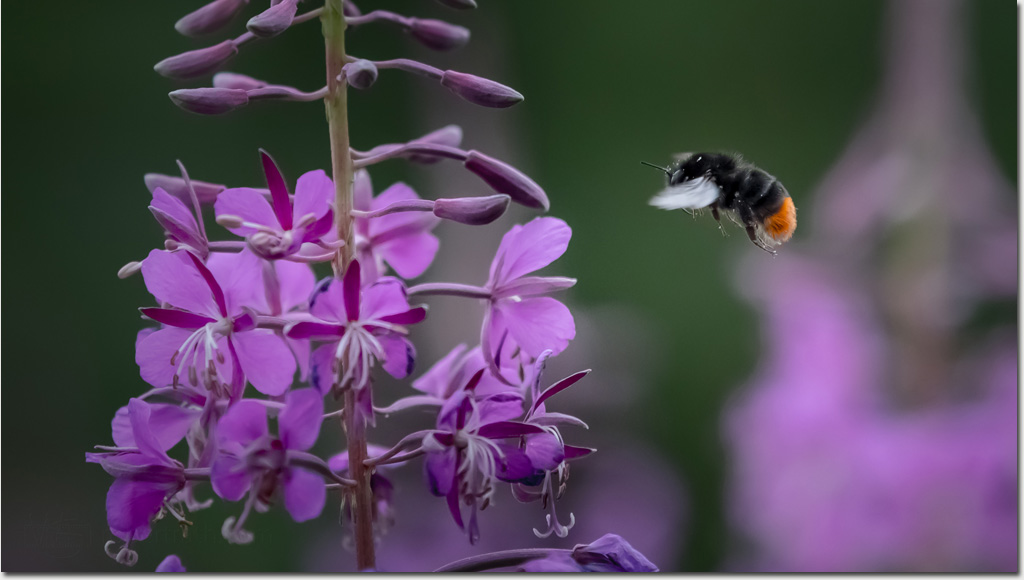
Even at 1/3200 of a second this incoming bumblebee's wings are a blur. Short of using a high powered strobe I don't think it is possible to freeze their motion completely.
There were two kinds of bees hard at work on this patch of flowers. One was a slimmer and less hairy bee which methodically flew up to a flower head and worked its way systematically around each flower before moving on to another. It was quite easy to photograph these guys due to their very predictable movements. The others were the bumblebees.
The bumblebees behaved as their name might suggest. They flew in crazy erratic patterns from flower head to flower head with no hint of any systematic approach to pollen collection. This made them hard to watch and hard to photograph. Still I wanted a photo of a bumblebee and I persisted until I had one.
I chose what I though would be a high enough shutter speed, I bumped up the ISO and stopped down a little to have a better chance of a focused image. There was nothing 'beeline' about getting a shot I was happy with. It was like bumbling photographer meets bumbling bee and only those rare intersecting moments resulting in a usable image.
In the end it's patience wins and not make a beeline.
Photo: Robert Rath, 'Bumblebeeline', 1/3200s f/4.5 ISO3200 200mm
Tuesday, July 31. 2018
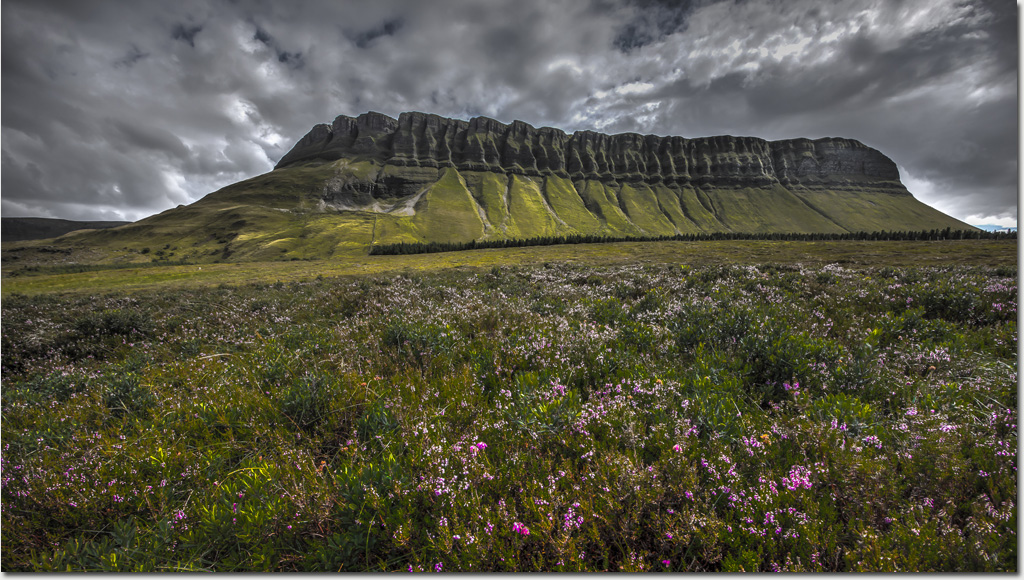
Ben Bulben loomed, first small in the distance and now larger as we neared.
Grey clouds shrouded the landscape and rain fell like folded curtains across the mountain. Having only ever seen Ben Bulben from a distance it was time to get a little closer.
We drove up green shrouded country lanes, closer, higher. Then we got out of the car and walked.
Still not happy with our roadside fenced off vantage, over the fence I climbed and continued upwards into a landscape of boggy green tussocks of grass, mosses and wet squelchy ground.
When I had finally picked my way up to this spot a blanket of cloud covered the landscape in flat grey light. So there I waited. And waited. I waited some more. Then a rent in the clouds opened wide enough to let the sun come through and light up Ben Bulben and the surrounding landscape.
The sunshine only lasted a few minutes as I watched that searchlight of sunshine sweep across the scene and then into the north.
I am grateful it was just long enough to capture a few images of this iconic natural Sligo wonder.
Photo: Robert Rath, 'Ben Bulben', 1/30s f/7.1 ISO640 17mm
Monday, July 30. 2018
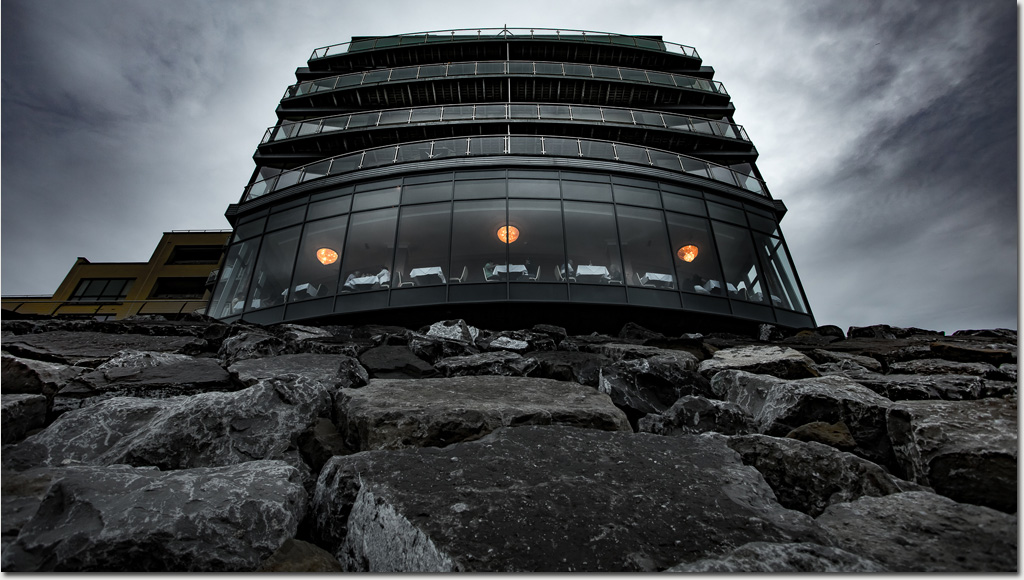
Long ago castles were constructed to both defend and impress. In more peaceful times manor homes continued the tradition of impressing positions of wealth and power.
The need to impress will never go away but it's nice to spend a little while dining in a fabulous structure looking out over an even more beautiful land and seascape. For a few hours at least, lording over it all.
Photo: Robert Rath, 'Lording Over It All', 1/30s f/7.1 ISO640 17mm
Sunday, July 29. 2018
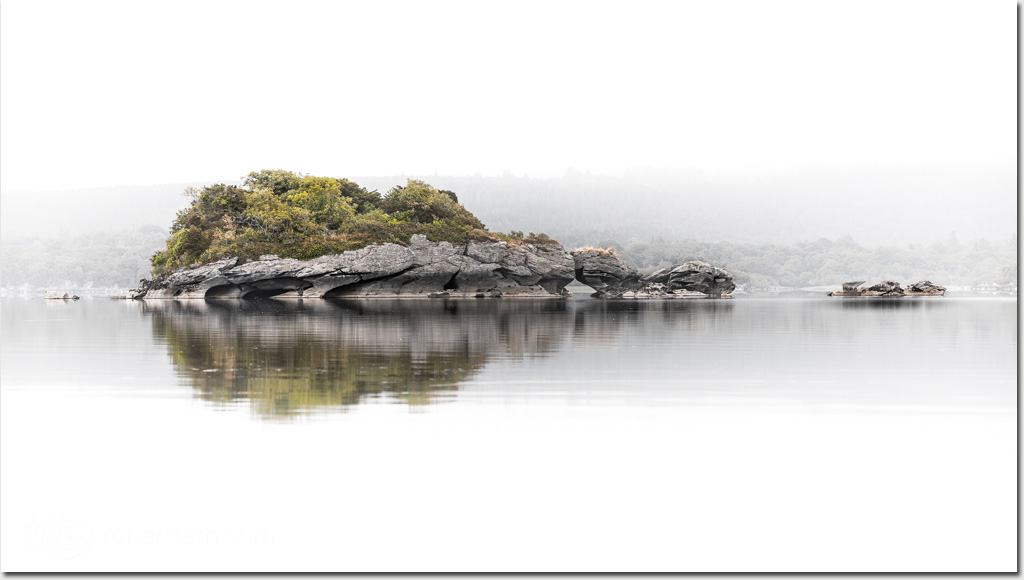
There is no one I know that does not love the view across water.
To gaze out across a vista unencumbered by any obstacle to either a distant bank, shore or horizon is universally calming.
Perhaps this tiny island might have broken that spell but when the water is calm and its reflection ripples out and back towards me it makes it all the more peaceful.
Photo: Robert Rath, 'Peaceful Symmetry', 1/6s f/5 ISO100 120mm
Friday, July 27. 2018
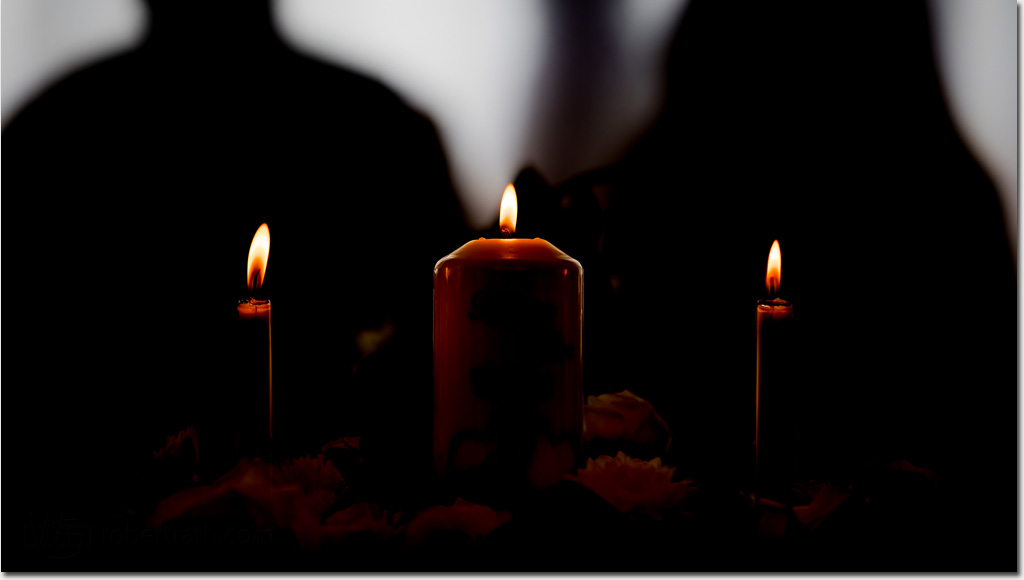
The 'Unity Candle' is a common part of weddings ceremonies in western culture but where does this tradition actually come from?
Today for Jennifer and Steve all that matters is that it symbolises their love and coming together as newlyweds.
Their wedding was a unique fusion of ceremony, music and place which they made their own and which we were privileged to be a part of.
So, does it really matter the history behind those candles and their gentle flames? Perhaps it is best to not delve too deeply and risk disapproval.
As in all things they have given it their own beautiful meaning just as it should be.
Congratulations Jennifer and Steve. May your marriage forever be an inexhaustible source of love, nurture and joy for you both.
Photo: Robert Rath, 'Three Candles', 1/1250 f/2.8 ISO400 135mm
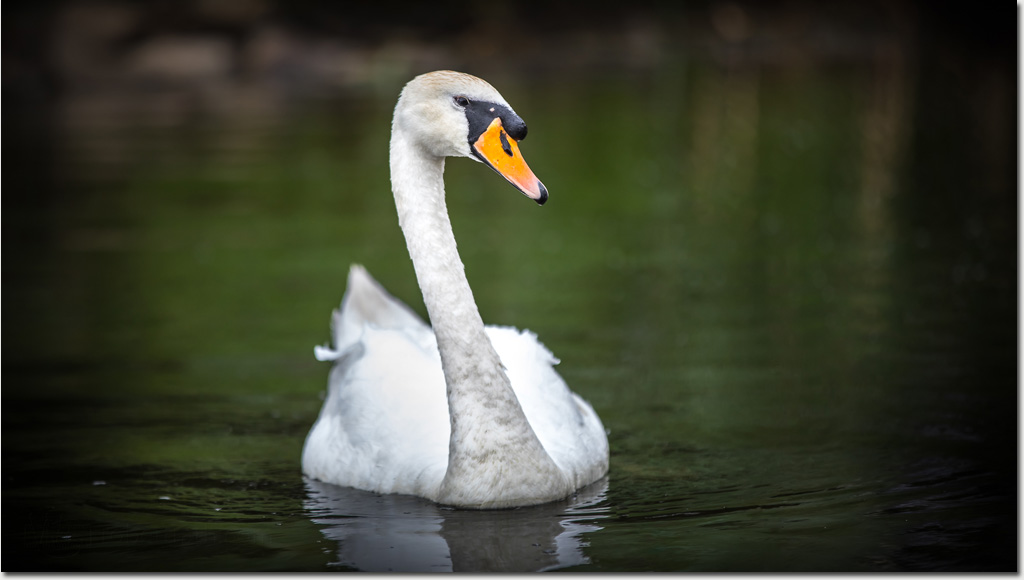
Imposing, majestic, graceful, serene, beautiful, and elegant all come to mind where swans are concerned.
When it comes to being photographed they are not so different from people.
Here's looking at you!
Photo: Robert Rath, 'Look At Me', 1/640s f/2.8 ISO320 200mm
Thursday, July 26. 2018

No matter your interests in motorcycles there is no mistaking the shear imposing audacity of Honda's 'GoldWing'.
This is the first time I've come across one with camera in hand so I really had no choice in the subject matter.
If gold could fly this would be it!
Photo: Robert Rath, 'If Gold Could Fly', 1/250s f/2.8 ISO100 70mm
Wednesday, July 25. 2018
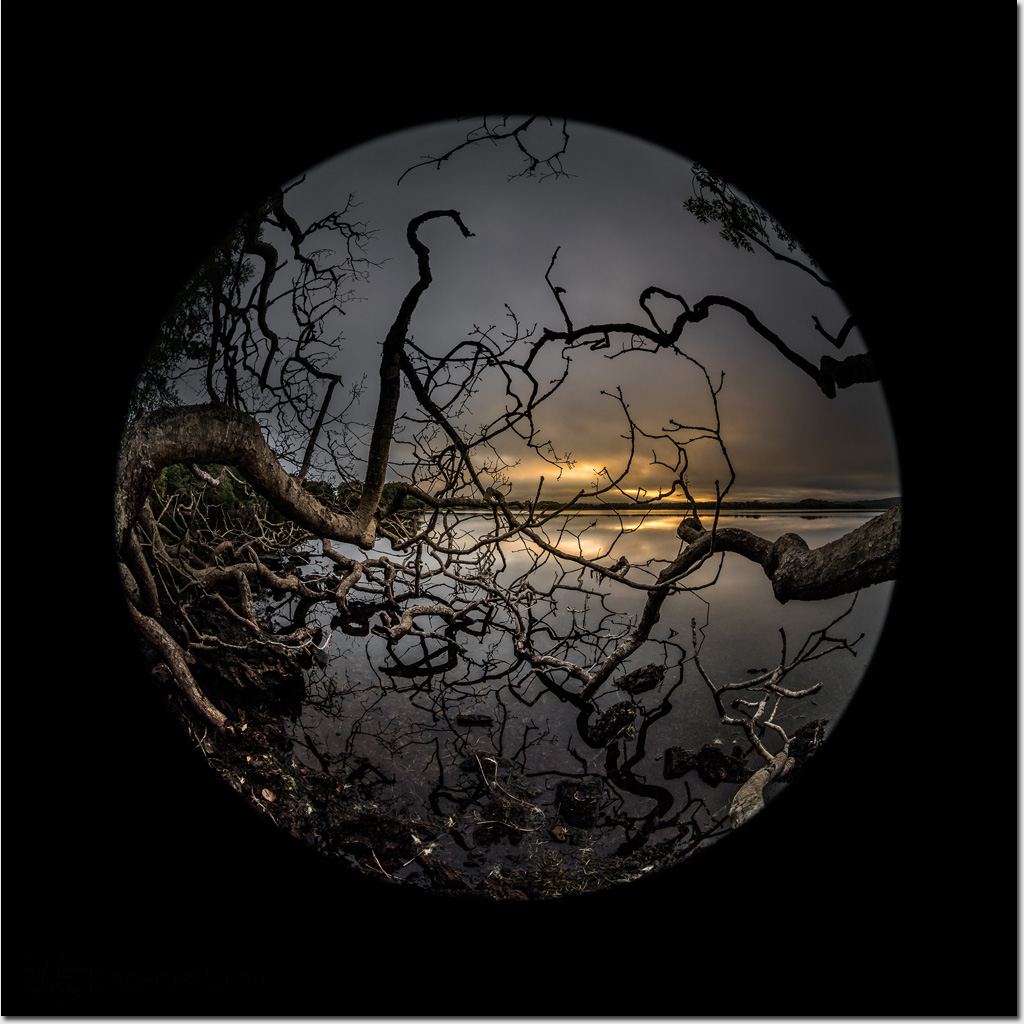
The water was calm, almost mirror like and perfect for capturing the feel of the lake at dawn. Now all I needed was a splash of blue sky and a hint of sun. Despite all my coaxing I could not extract a glimmer of sunshine.
Being grateful for the smidgen of colour that did appear I sought a new perspective in this tangle of gnarled branches of some long fallen tree.
The foreground will always be an important part of any landscape and this tangled place made it something special even without the sun I had risen so early and driven so far for.
Photo: Robert Rath, 'Tangled', 1/50s f/11 ISO100 8mm
Tuesday, July 24. 2018
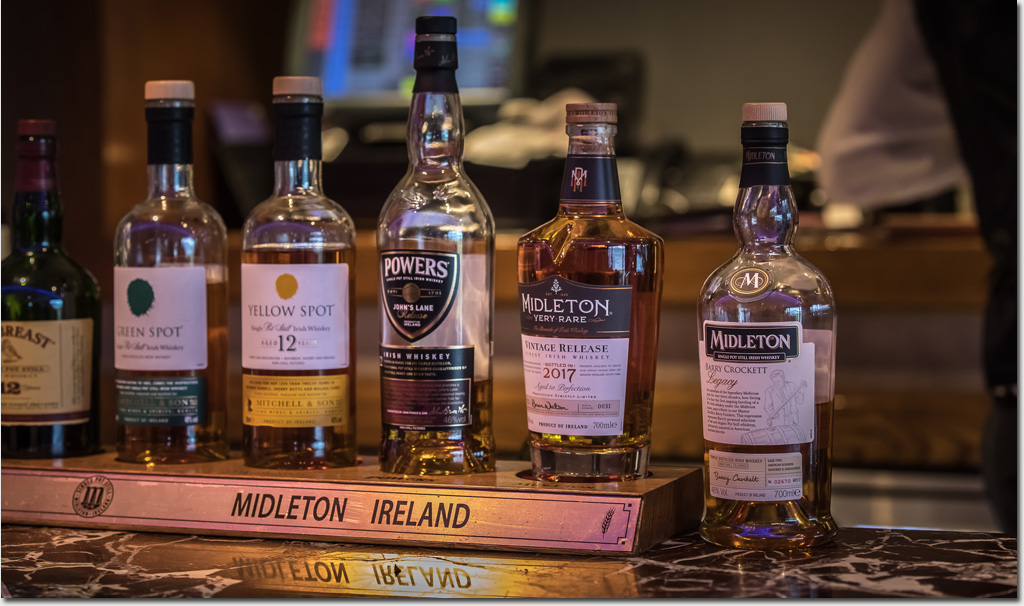
A whiskey was the last thing on my mind as I approached the bar to buy a round of drinks. Then I saw them all lined up together.
Since experiencing my first Irish whiskey some fifteen year ago I have come to love whiskeys with almost no hint of peat and have learned to always end my whiskeys with an 'ey'.
Seeing that bottle of Midleton Barry Crockett opened on the bar and after a serious conversation with my will power I chose to bring "Barry' back to the table.
Tonight we dined in very fine company indeed.
Photo: Robert Rath, 'In Fine Company', 1/40s f/4 ISO2000 75mm
Monday, July 23. 2018
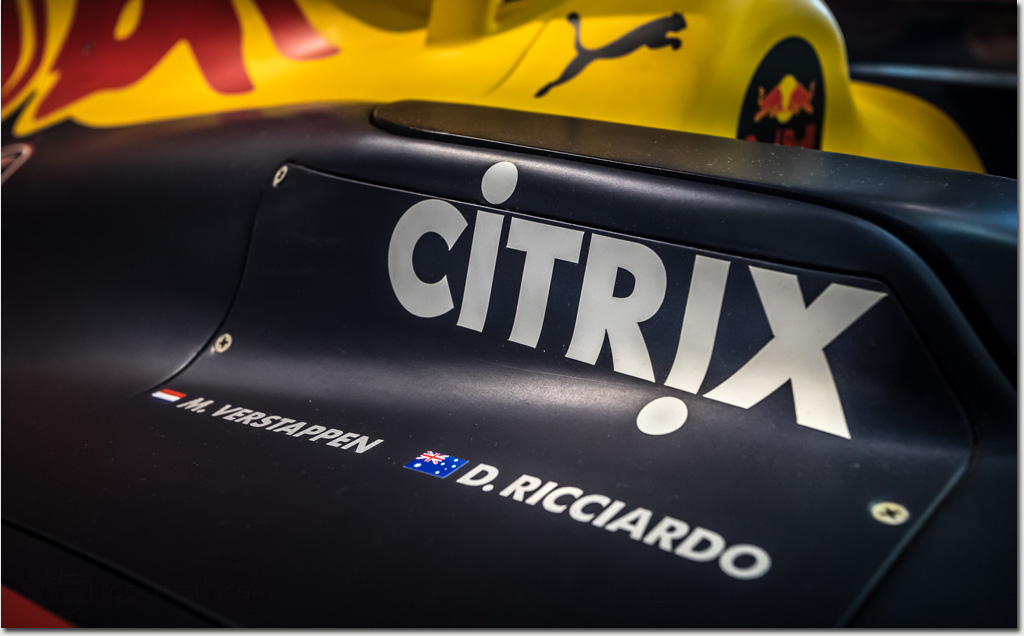
What do Austrian and Australian formula one drivers Max Verstappen and Daniel Ricciardo have in common aside from the fact that they both drive for Red Bull? And my answer is ... 'Austr__ia'.
Being an Austrian Australian I find this play on words somewhat amusing and on the odd occasion a source of confusion when travelling.
Despite their differences and recent spats I hope Verstappen and Ricciardo remain civil and continue driving for Red Bull as a team. It's great seeing such a public connection with an Austrian and Australian working together in such a high profile (if not high ego) sport.
Photo: Robert Rath, 'Austria and Australia', 1/50s f/6.3 ISO3200 40mm
Tuesday, July 17. 2018
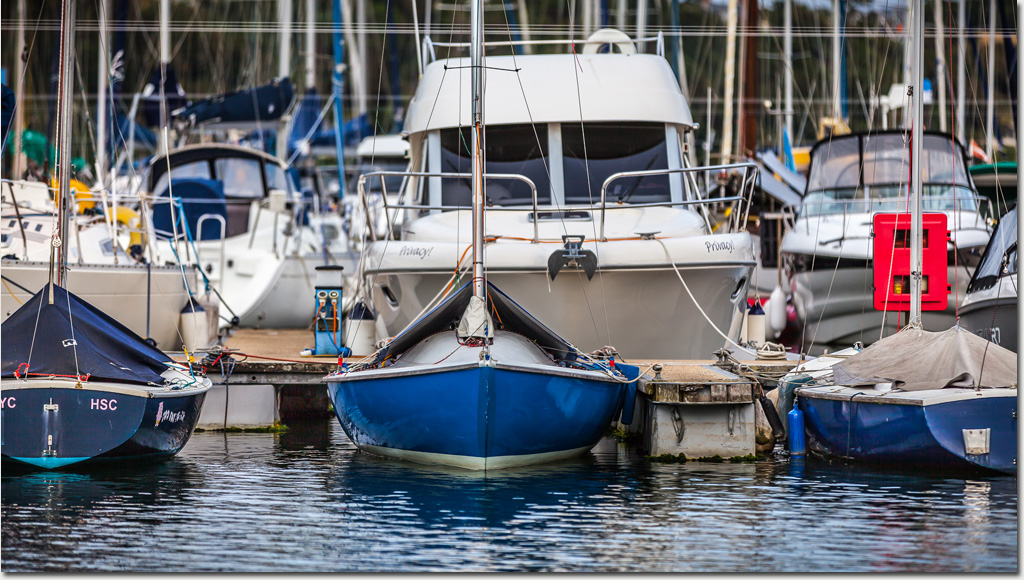
In amidst all the other sailing and motor boats she sits. No privacy here other than her namesake.
Take her far out into the blue water. Take her out towards the horizon and beyond prying eyes and she'll give you all the privacy you want!
Photo: Robert Rath, 'No Privacy', 1/1250s f2.8 ISO100 200m
Monday, July 16. 2018
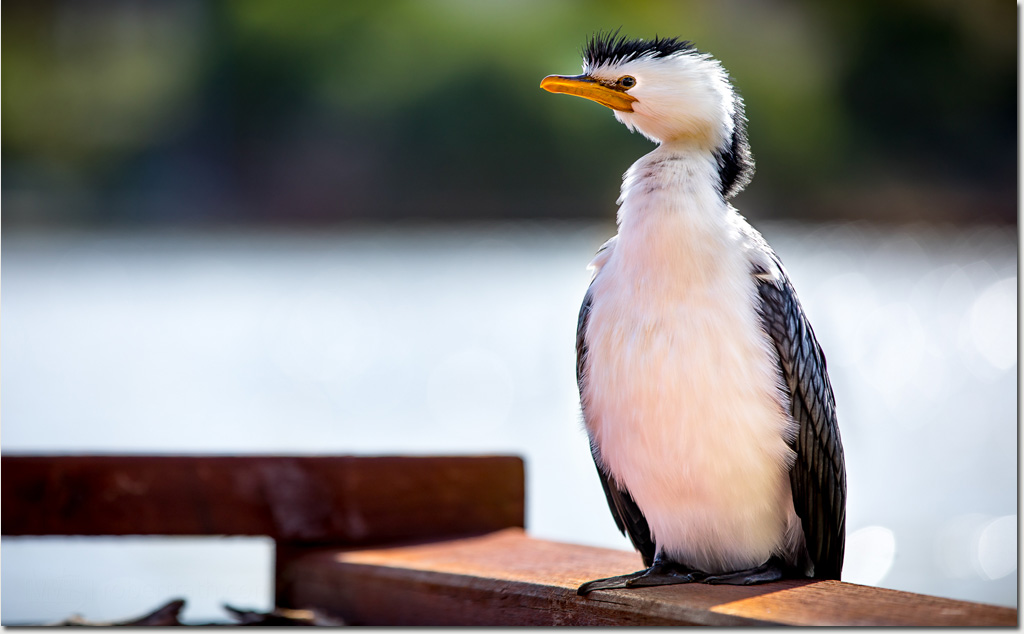
Fronting up to a desk job every day for a prolong period is a sure way to loose contact with photography. Or is it?
Well it might be an easy excuse but really there is no reason why a quick lunch break and a 30 minute stroll away from your desk can't be used to keep your your photographic eye sharp and get a little exercise at the same time. Today I did just that, grabbing my camera and heading out for a quick stroll.
Ten minutes into a little sunshine and fresh air I came across this little guy, a juvenile pied cormorant who just oozed attitude. For a few minutes it preened and peered gawking at me with all kinds of expressions as I lay on the ground capturing this portrait.
Then without warning it turn around, raised its backside in the air towards me and plopped into the water. Thanks dude!
Photo: Robert Rath, 'Dude With 'Tude', 1/800s f3.5 ISO160 200mm
Tuesday, July 10. 2018
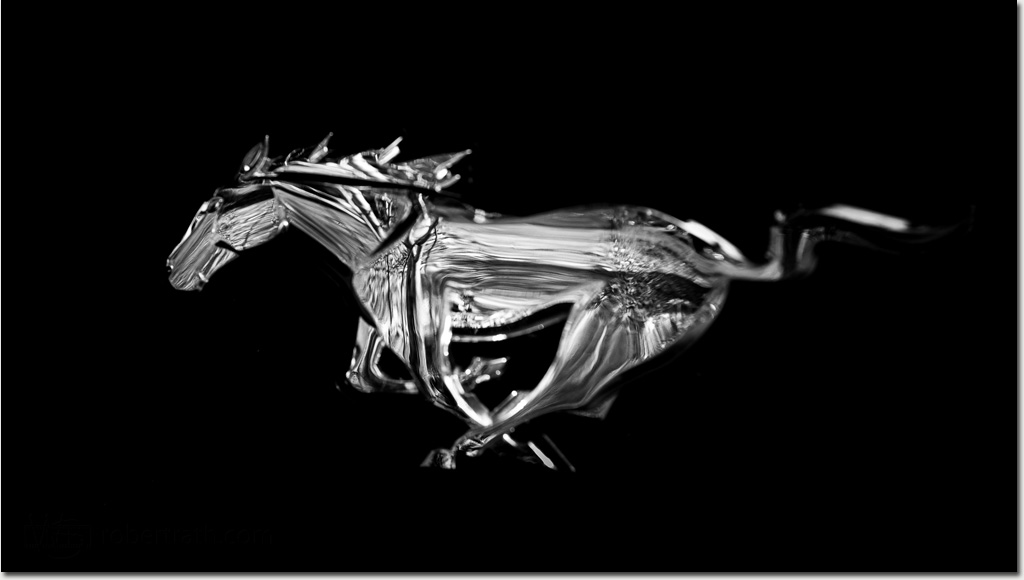
I grew up with the family car having always been a Ford.
As a young teenager I was inspired by such Australian muscle cars as the GTHO and Coupe Falcons but when I encountered my first Mustang, an exotic car in the Australian 70's I got my first hint there were bigger beasts out there.
I've long since shed my insular loyalty to a motoring brand just because that's what my Dad drove but still to this day I find my self singing along in my head to Mack Rice's Mustang Sally when ever I see a Mustang old or new.
Photo: Robert Rath, 'Ride Sally Ride', 1/640s f6.3 ISO640 200m
Sunday, July 8. 2018
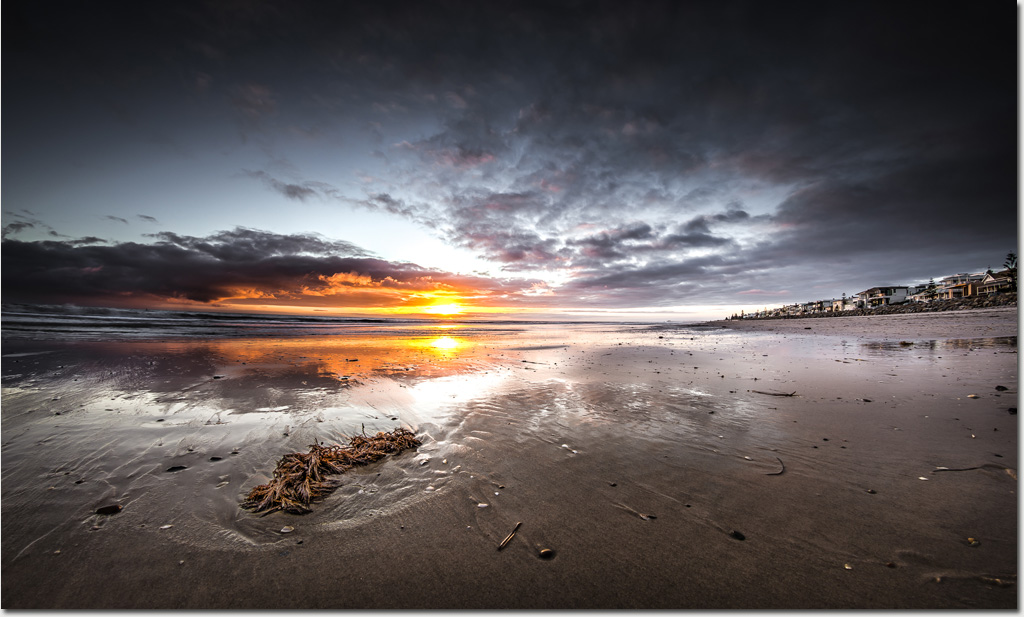
With a strong feeling that there just might be an awesome sky this evening I headed down to Henley Beach about 15 minutes before sunset. The moment I arrived I realised I had made a mistake.
For some months now Henley Beach Jetty has been a no public access construction site as storm damage is being repaired and a new shelter constructed. The interim downside is that it has become a bit of an eyesore and not conducive to lovely images.
Leaving it so late I really had no choice but to make the most of being here and pointed my camera North by North West instead.
Photo: Robert Rath, 'North by North West ', 0.3s f20 ISO100 14mm
|

































